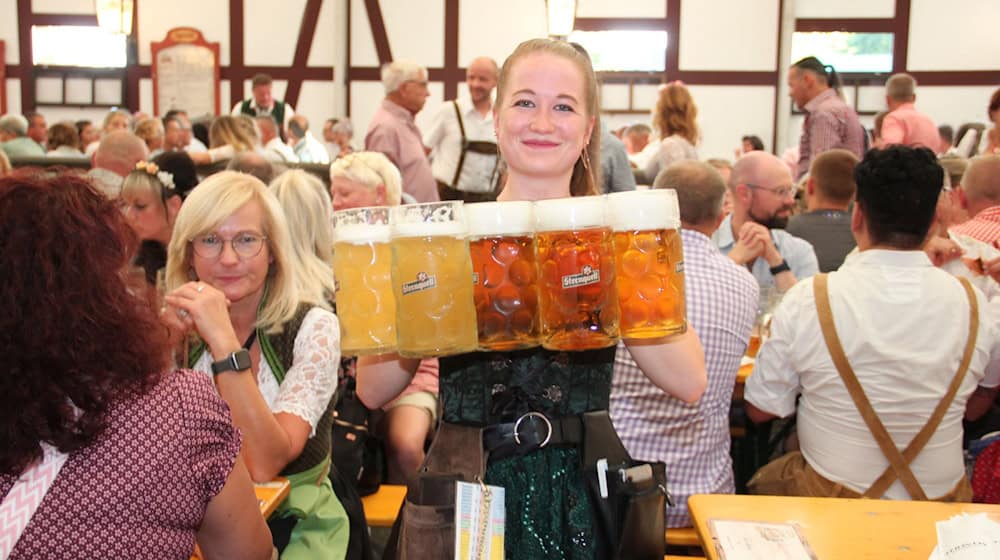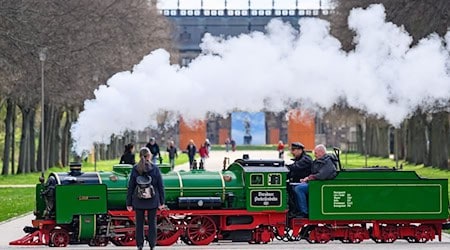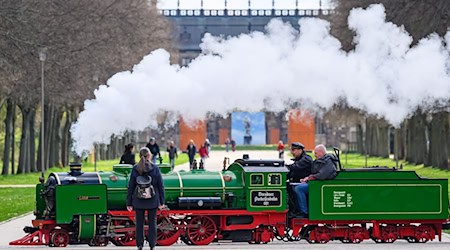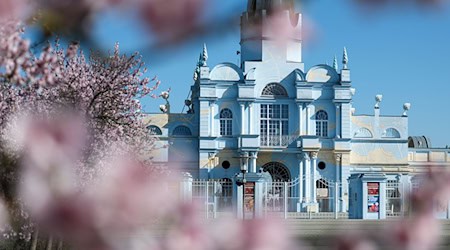The brass music makes the beer mugs vibrate on the long wooden tables where people in dirndls or lederhosen sit. Oktoberfests or Wiesn based on the Bavarian model are also gaining more and more fans in Saxony. "Our Oktoberfest at home has grown considerably in the last three years and still has a lot of potential," says Thomas Münzer, Head of Marketing at Sternquell-Brauerei GmbH in Plauen. The company was the first in Saxony to start the season with the "Sternquell Wiesn". Several thousand guests attended the first run three years ago. This year, the number is likely to have been around 20,000, estimates Münzer. "But as we don't charge admission, we're only estimating."
According to the head of marketing, the majority of the brewery's annual turnover is still generated through trade. "But we use the Wiesn to present our beer brand as part of the Vogtland region and to charge it emotionally." A separate "Stadl" - a marquee with an adjoining beer garden and seating for 3,000 - was decorated in the Saxon state colors of green and white. Mainly regional brass bands played and a "Wiesn beer" was brewed. According to Münzer, the focus is on a cozy get-together and regional beer culture.
Dirndl and lederhosen welcome - but not compulsory
Feldschlößchen in Dresden also uses its own Pichmännel Oktoberfest to present its own brand, as Marketing Manager Frank Haase explains. "In this respect, such events are very important for breweries because they provide direct access to consumers." Nevertheless, Feldschlößchen still sells most of its beer through retailers. At the Munich Oktoberfest, visitors drank between 0.9 and 1.15 liters of beer per head in recent years. One Maß corresponds to one liter of beer. "We are well above that at our Oktoberfest. We sell a lot more liters of beer per head than the people in Munich," says Haase about the Dresden version of Oktoberfest, without giving more precise details.
From September 26, Feldschlößchen is planning thirteen days of events, with its own marquee and festival beer, according to Haase. "This has a slightly higher alcohol content and is not quite as bitter as a Pilsner and is very drinkable." The Pichmännel Oktoberfest is taking place for the tenth time. Within hours, 32,000 tickets were sold in advance from spring. "Weekends and public holidays were sold out within minutes." The brewery is still based on the Bavarian original. "But we have long since given our Oktoberfest its own touch," explains Hasse, speaking of a "marquee decorated with great attention to detail and unusual rides on the grounds". Nevertheless, most guests would still prefer to wear a dirndl or lederhosen. "But that's not compulsory."
2024 has been a "solid year with ups and downs" for the Dresden brewery so far. "When the beer garden season starts late, as it did this time due to the weather, we notice it. Gastronomy is an important line of business for us," explains Haase.
Thirst for beer is declining in Saxony
According to statistics, the thirst for beer in Germany has been declining for years - including in Saxony. In 2018, Saxon breweries sold 7.8 million hectoliters of beer. Five years later (2024), sales at the 82 breweries in the state stood at 6.9 million hectoliters, according to the State Statistical Office. According to Thomas Gläser, Managing Director of the Saxon Brewers' Association, domestic Pilsner is still in high demand in Saxony. However, non-alcoholic beers and mixed beer drinks are also becoming increasingly popular. "The latter is also reflected in the gastronomy sector. The range and selection of non-alcoholic beers and mixed beer drinks here has recently increased significantly."
Beer stands for customs, tradition and conviviality, says Gläser. "Hardly any other product has such a close and emotional connection to a region as local beer." The brewing industry in Saxony would therefore use various offers and concepts to make it clear: "Beer is home". This also includes the brewery festivals in September and October. "The vacations and vacation time are over, the hop harvest has been brought in and the beer garden season is coming to an end," says the Managing Director of the Brewers' Association, explaining the favorable timing.
October festivals also in Freiberg and Wernesgrün
October festivals are also on the agenda at other breweries. For example, the Freiberg brewery (Mittelsachsen district) plans to hold its second Oktoberfest from September 20 to 22 after a five-year break. And the Wernesgrüner brewery is also organizing an Oktoberfest in Wernesgrün in Vogtland on October 2, according to a spokeswoman for the brewery. The program is also strongly based on the original from Bavaria - with a barrel tapping, music and its own beer. "In general, Oktoberfests with their special atmosphere are very popular in the region. There are many of them here in the vicinity of the brewery," says the spokesperson.
Copyright 2024, dpa (www.dpa.de). All rights reserved










